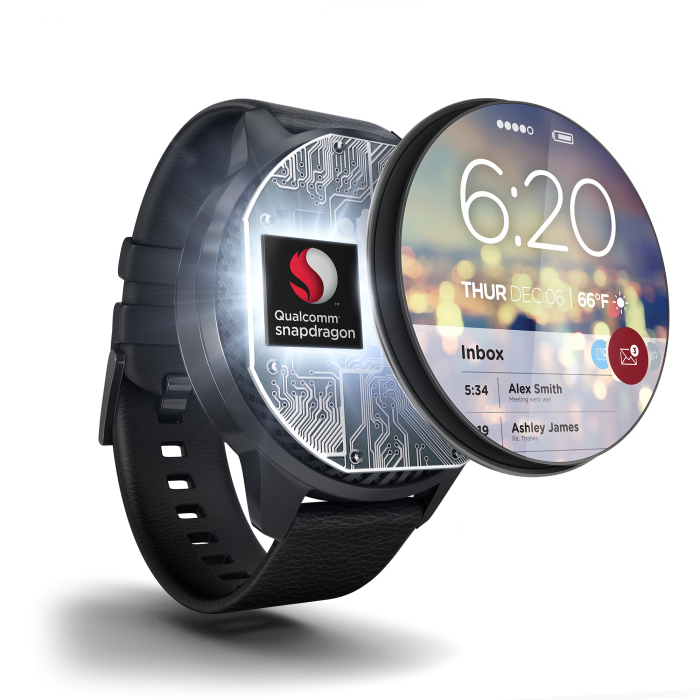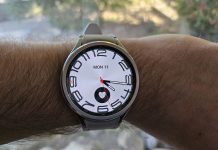
Chances are if you have an Android Wear device then it is being powered by a Qualcomm Snapdragon chip, the SD400 in the vast majority of cases. However, these SOC’s were never specifically designed for use in wearables, as such many have wondered what efficiencies could be gained if someone was to develop Wearable specific chips.
As of today, we no longer need to wonder, Qualcomm has announced not only the introduction of their new product line of wearable processors, the Snapdragon Wear platform but their first offering within that range, the Snapdragon Wear 2100.
The Wear 2100 features:
- Smaller size: being 30% smaller that the Snapdragon 400
- Lower Power consumption: Drawing 25% less power than the Snapdragon 400 for both teathered and conected (eg has its own cellular radio) uses
- Smarter Sensors: intergration of a sensor hub for ultra-low power sensor intergration
- Always Connected: LTE modem, GPS (GNSS), Wi-Fi and Bluetooth all on the SOC

Under the hood the Wear 2100 is packing:
- Quadcore A7 processors clocked upto 1.2GHz
- Adreno 304 GPU
- Intergrated Digital Sygnal Processor (DSP)
- HD noise canceling
- Support for displays upto 640 x 480 @ 60fps
- X5 global LTE modem
- WiFi 802.11 n (2.4GHz)
- Support for Quick charge 2.0
- NFC – yes you saw it NFC on a wearable SOC
- Bluetooth 4.1 LE
- Ram upto LPDDR3 @ 400 MHz
- USB 2.0
Many Android Wear users, myself included, have been hoping for the integration of NFC chips to incorporate wireless payments via Android Pay and Android Wear, seeing NFC specifically supported make me all the more anxious for Google IO 2016. Could we finally we getting Wear based mobile payments in 2016?
Without being able to test real world performance under normal conditions, in fact, test it in any way, it’s hard to tell if the Wear 2100, or one of its successors, will deliver the trifecta of low power, increased functionality whilst improving or maintaining performance. If Qualcomm has managed to pull that off you might be hard pressed to find a wearable not using the SD Wear 2100 in 2016.
Qualcomm called out Android Wear as the primary target devices for the new chips, along with various other “smart” products, basically put smart in front of anything and Qualcomm wants you to use this chip to run it. They have announced that the new SOC will be available to OEMs from today, yes today not Q3 or early 2017 today!
LG was quoted in the press release ending their quote with a nice tease “we look forward to launching new smartwatches and other wearable devices that bring new and innovative use cases to consumers later this year”. With MWC 2016 just around the corner could LG be teasing a more imminent release of a new Android Wear device?
Are you excited for Qualcomm’s first Wearable designed Snapdragon chip? What do you think dedicated wearable SOCs will do to this new market segment? Let us know in the comments.



You mentioned it supports GPS but didn’t list it “under the hood”. Is GPS definitely supported?
As far as I can tell there are actually two different SoCs being released, a tethered version that has wifi and bluetooth and a directly connected version that has LTE and 3G. It is the LTE version that has GNSS integrated into the modem. There’s no suggestion this is available on the tethered version.
Have to say also excited for NFC in my Android Wear watch. I have sort of made the thought that, unless something drastically changes, I will be replacing my phone every odd year (so got the 6P last year) and my watch on the even year (still rocking the original Moto360 but hoping for something with better battery life and NFC this year) (Would also love a new Nexus 7 this year to replace my 2013 model). This is really good news though.